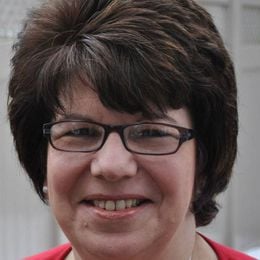Innovation and Crowdsourcing May Help End Alzheimer’s
The XPrize competition seeks ideas to address devastating illness
Could crowdsourcing lead to a cure for Alzheimer’s disease? That’s the goal of a team of scientists, advocates and advisers who have joined forces to create the first XPrize for Alzheimer’s.

This “Alzheimer’s breakthrough team” has issued a call to experts and nonprofessional innovators alike to use XPrize components — gaming principles, crowdsourcing and rapidly advancing technologies — to solve one of the world’s “grand challenges” and compete for a multimillion dollar prize. Small, multidisciplinary teams will all focus on the same goal: targeting the earliest biological signs of Alzheimer’s.
It’s an approach designed to spark innovation and overcome existing obstacles to early diagnosis and prevention of this devastating disease.
A Game-Changer
Current treatments attack Alzheimer’s far too late in the process to be very effective. However, a non-invasive approach, which targets specific proteins or other indicators, could lead to a flood of new treatments and drugs that can save lives, according to gerontologist Ken Dychtwald, the CEO of AgeWave and a founding member of the Alzheimer’s breakthrough team.
“It’s hard to look at the future of an aging world and not realize that Alzheimer’s disease may be the biggest challenge we’re facing this century,” said Dychtwald. “It’s not simply ‘those people’ or ‘the elderly,’ it’s us — our wives, our husbands, our parents, our best friends who will be pulled down by this horrific disease.”
But all that may change with a successful XPrize competition.
Philip Edgcumbe, a 29-year-old Canadian scientist, bioengineer, entrepreneur and medical student is leading this consortium of experts. He said he’s issuing “a casting call to the world” to develop accurate, affordable, easily reproducible and minimally invasive technologies. If someone can find the right target, he explained, then pharmaceutical researchers can work to hit it with the right drug.
Hope for a Breakthrough
The Alzheimer’s XPrize seeks to create a new framework for innovation and eliminate Alzheimer’s disease from society. Thanks to the convergence of medical technologies, gamification and crowdsourcing, “the time and tools are right for a major breakthrough in Alzheimer’s research,” he said in a conference call with reporters.
Existing scientific approaches are well-intentioned, but lack collaboration and information sharing, according to Dychtwald, who has researched aging and longevity since the 1970s. Additionally, competing priorities among businesses, pharmaceutical companies and governments drag out too little progress over too long of a time frame, he said.
The XPrize advances prevention of a potential cure by decades, he explained, because anyone, from high school students to garage entrepreneurs with a good idea, can collaborate and share information. It’s a huge challenge, but “I’m confident we can get this done, that we can bring an end to this disease,” he said.
Few Treatments So Far
Some 50 million people and their families worldwide will be affected by the disease in 2017, according to the Alzheimer’s Association. Yet, only six drugs are approved in the U.S. to treat the estimated 5.5 million Americans with Alzheimer’s. None of them prevent or stop it, according to team member Lisa Genova, a neuroscientist and best-selling author of Still Alice, about a woman with early-onset Alzheimer’s.
“Alzheimer’s is the only disease among the 10 leading causes of death that can’t be prevented, slowed, or cured,” she said. “It’s 100 percent fatal, with zero survivors. Why is this?”
Genova’s grandmother was diagnosed with the disease in the 1990s. Back then, scientists could only know for sure if someone had Alzheimer’s through an autopsy. Now, PET scans and lumbar punctures can help with diagnosis but they’re expensive, often not covered by insurance, can be frightening and carry their own health risks, including radiation exposure, said Genova.
They’re also not easily accessible to many people, and may not be sensitive enough to detect the disease in its earliest stages, she added. Clinical trials of drugs designed to intervene earlier in the disease fail time and again, because trial subjects already have symptoms. They are too far along in the disease process for new drugs to be effective.
And because clinical trials are very expensive and can last for years, the pharmaceutical industry generally develops only one drug at a time, compartmentalizing and siloing information, according to Genova.
“It’s like blowing on a match after the brain is already set ablaze, hoping this will extinguish the fire,” she said.
Other Disease Treatments More Advanced
Innovative tests and technology exist for early detection of other formerly fatal conditions, like heart disease, cancer, or AIDS, allowing more people to survive healthier for a longer time. Advances came from the tech world, software engineers and imaging specialists, not necessarily from clinicians. Genova questions why science has yet to do the same for Alzheimer’s treatment, or develop methods to predict who may get it.
Scientists believe the disease process begins at least 10 years before noticeable symptoms appear. That leaves a window of opportunity when the disease is in its earliest stages to find ways to detect and prevent it from progressing, Edgcumbe said.
The scale, cost and impact of Alzheimer’s makes it one of this century’s greatest economic and social challenges, according to George Vradenburg, co-founder and chairman of UsAgainstAlzheimer’s and a founding member of the Alzheimer’s breakthrough team. He described global investment in research and family support to date as “anemic,” due to competing demands on national budgets, multiple government and institutional priorities, and multiple constituencies.
“There’s a clear market failure when it comes to innovations that benefit all players. That’s where the unconventional power of the XPrize crowdsourcing model can bring about powerful acceleration of a cure for Alzheimer’s,” he said.
Advances Could Stop the ‘Sinkhole’
As people live longer, Alzheimer’s is overwhelmingly the condition most boomers say they fear developing, Dychtwald said.
A breakthrough could dramatically reduce or eliminate the suffering of tens of millions of victims and their families and save tens of trillions of dollars in health costs and lost productivity. “Unless Alzheimer’s disease is stopped and stopped soon, it will be the health, social and financial sinkhole of the 21st century,” he said.
The Alzheimer’s breakthrough team will present its proposal to the XPrize Foundation’s Visioneers Summit in Los Angeles in October.


